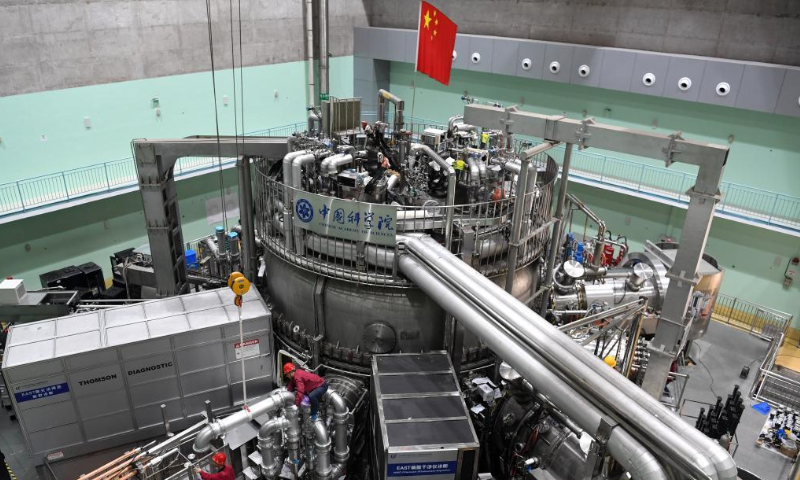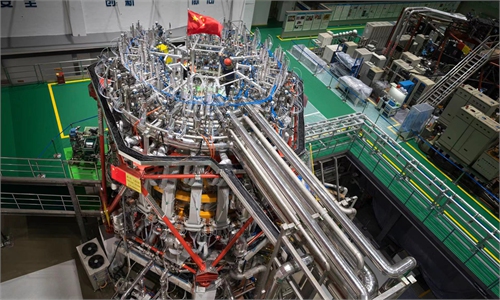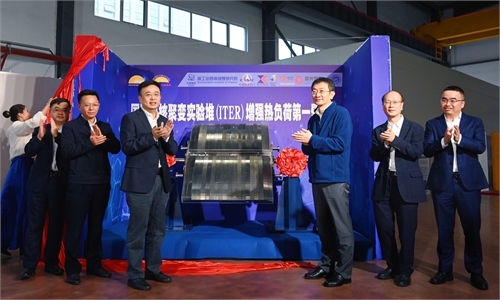403 seconds! Chinese 'artificial sun' sets new world record in sustaining steady-state high-confinement plasma

Staff members perform an upgrade to the experimental advanced superconducting tokamak (EAST) at the Hefei Institutes of Physical Science under the Chinese Academy of Sciences (CAS) on April 13, 2021. Photo: Xinhua
China's "artificial sun," the Experimental Advanced Superconducting Tokamak (EAST), which is also the world's first fully superconducting tokamak device in operation, saw a major breakthrough on Wednesday evening.
EAST achieved a high power, stable, 403-second steady-state long-pulse high confinement mode plasma operation, setting a new world record for steady-state high confinement mode operation of a tokamak device, China Central Television reported on Wednesday.
The innovation achieved by the EAST device provides an important experimental basis for the operation of the International Thermonuclear Experimental Reactor (ITER) and the independent construction and operation of fusion reactors in China, the report said.
In January, EAST made another breakthrough by discovering and demonstrating a new plasma operation scenario called Super I-Mode. The news was published in an article in Science Advances, according to Hefei Institutes of Physical Science under the Chinese Academy of Sciences (CAS).
The ultimate goal of EAST, located at the Plasma Physics center of the Chinese Academy of Sciences in Hefei, East China's Anhui Province, is to create nuclear fusion in a way that mimics processes in the Sun, using deuterium found in the sea to provide a steady stream of clean energy.
Unlike fossil fuels such as coal, oil and natural gas, which will run out and that pose a threat to the environment, raw materials required for the "artificial sun" are almost unlimited on earth. Therefore, fusion energy is considered the ideal "ultimate energy" for the future of humanity.
Global Times


